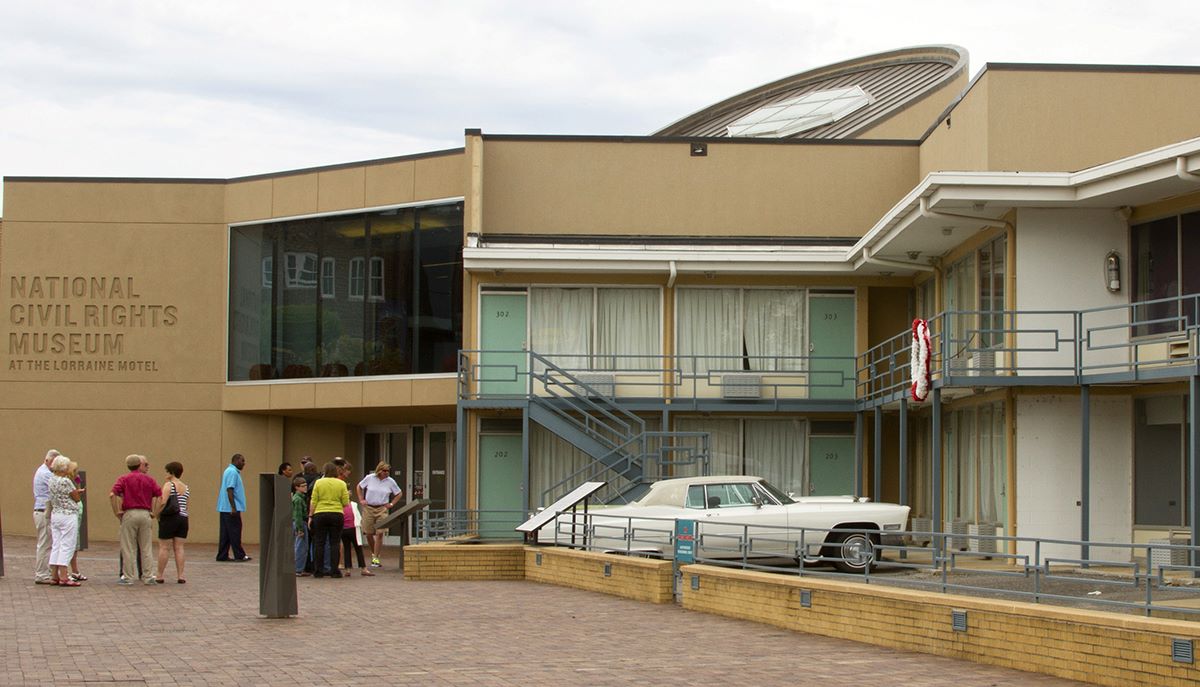Uncover History At The National Civil Rights Museum

Curious about the history of civil rights in America? The National Civil Rights Museum in Memphis, Tennessee, offers a deep look into the struggle for equality. Located at the Lorraine Motel, where Dr. Martin Luther King Jr. was assassinated, this museum tells powerful stories through exhibits and artifacts. Visitors can walk through the timeline of events that shaped the civil rights movement, from slavery to the present day. Whether you're a history buff or just looking to learn more, this museum provides a moving experience that highlights the courage and resilience of those who fought for justice. Ready to step back in time and gain a new perspective?
A Journey Through Time
The National Civil Rights Museum in Memphis, Tennessee, offers a profound look into the history of the civil rights movement in the United States. This museum, located at the former Lorraine Motel where Dr. Martin Luther King Jr. was assassinated, provides an immersive experience that educates and inspires visitors. Here are some must-see exhibits and areas within the museum.
The Legacy of Dr. Martin Luther King Jr.
Dr. King’s contributions to the civil rights movement are monumental. This section of the museum highlights his life, work, and the impact he had on the fight for equality.
- Room 306: This is the room where Dr. King spent his final hours. Preserved to look exactly as it did in 1968, it offers a poignant glimpse into history.
- The Balcony: Stand on the very balcony where Dr. King was shot. This spot is both somber and powerful, providing a direct connection to a pivotal moment in history.
- King's Last Speech: Listen to the recording of Dr. King’s final speech, "I've Been to the Mountaintop," delivered the night before his assassination. The speech is both haunting and inspiring.
The Struggle for Equality
This part of the museum delves into the broader civil rights movement, showcasing the struggles and triumphs of those who fought for justice.
- The Montgomery Bus Boycott: Learn about Rosa Parks and the year-long bus boycott that became a catalyst for the civil rights movement.
- Freedom Riders Exhibit: Discover the brave individuals who rode interstate buses into the segregated southern United States to challenge the non-enforcement of Supreme Court decisions.
- Lunch Counter Sit-Ins: Experience a re-creation of the sit-ins that took place at segregated lunch counters, a powerful form of nonviolent protest.
Voices of the Movement
The museum also honors the many voices that contributed to the civil rights movement, from well-known leaders to everyday heroes.
- The March on Washington: Explore the significance of the 1963 march where Dr. King delivered his famous "I Have a Dream" speech.
- The Selma to Montgomery Marches: Understand the importance of these marches in the fight for voting rights, including the brutal events of "Bloody Sunday."
- The Children's Crusade: Learn about the young students in Birmingham, Alabama, who marched for civil rights and faced violent opposition.
The Fight Continues
The struggle for civil rights didn’t end in the 1960s. This section of the museum addresses ongoing issues and modern movements for equality.
- Black Lives Matter: See how the modern movement for racial justice connects to the historical civil rights movement.
- LGBTQ+ Rights: Understand the intersectionality of civil rights, including the fight for LGBTQ+ equality.
- Immigrant Rights: Explore the challenges and triumphs of immigrants in their fight for civil rights in America.
Interactive Exhibits
The museum offers several interactive exhibits that engage visitors in a hands-on learning experience.
- The Bus: Sit on a replica of the bus where Rosa Parks made her historic stand, and listen to an audio account of that day.
- The Voting Booth: Participate in a simulated voting experience to understand the barriers faced by African Americans before the Voting Rights Act.
- The Freedom Wall: Add your own message to this interactive wall, expressing your thoughts on freedom and equality.
Educational Programs and Resources
Beyond the exhibits, the museum provides numerous educational resources for visitors of all ages.
- Workshops and Seminars: Attend workshops and seminars that delve deeper into civil rights history and contemporary issues.
- Documentary Screenings: Watch documentaries that provide additional context and personal stories from the civil rights movement.
- Youth Programs: Engage younger visitors with programs designed to educate and inspire the next generation of activists.
Reflecting on Progress
The museum encourages visitors to reflect on the progress made and the work still to be done in the fight for civil rights.
- The Reflection Room: A quiet space for contemplation, where visitors can reflect on what they’ve learned and consider their role in continuing the fight for equality.
- The Legacy Wall: A tribute to those who have dedicated their lives to civil rights, inspiring visitors to carry on their legacy.
A Visit Worth Your Time
The National Civil Rights Museum offers a powerful look into the struggle for equality. Walking through its halls, you'll see exhibits that bring history to life. From the Montgomery Bus Boycott to the March on Washington, each display tells a story of courage and resilience. The museum isn't just about the past; it connects to ongoing issues today. Visiting this place can inspire you to think about your role in making the world better. It's a reminder of how far we've come and how far we still need to go. Whether you're a history buff or just curious, this museum is a must-see. It’s more than just a collection of artifacts; it’s a call to action. Make sure to add it to your travel plans. You won't regret it.

